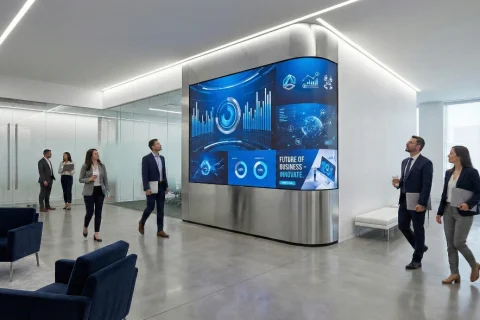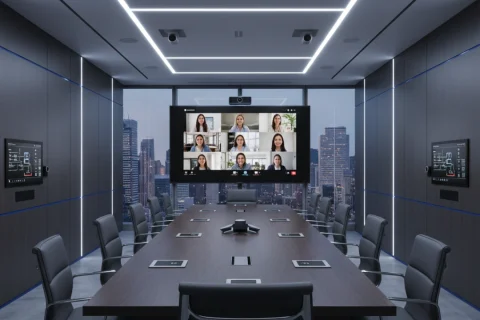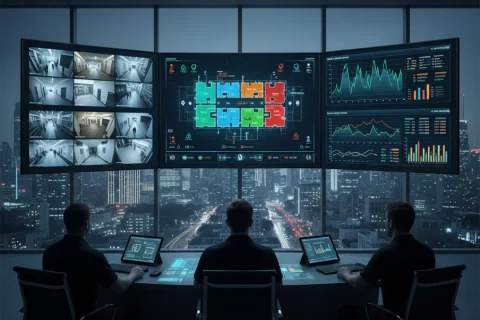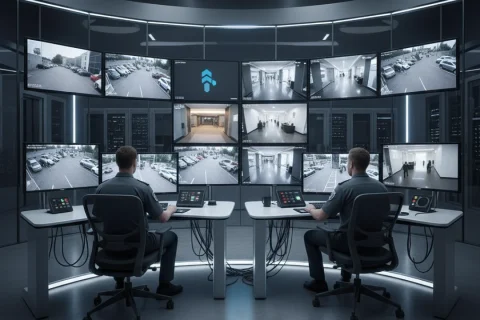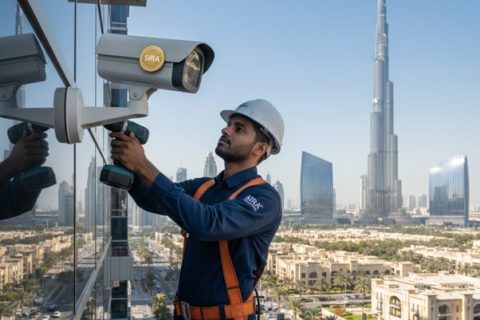Introduction
In today’s fast-paced business environment, meeting room solutions have become essential for organizations seeking to enhance collaboration and productivity. Modern meeting spaces require more than just tables and chairs, they demand integrated technology that enables seamless communication, efficient workflows, and engaging presentations. From startups to enterprise-level organizations, businesses across the United States are recognizing the transformative power of smart meeting room infrastructure. Whether you’re conducting client presentations, team brainstorming sessions, or global video conferences, the right technology integration can make the difference between a productive meeting and a frustrating experience.
Key Takeaways
- Integrated AV solutions streamline presentations and video conferencing, reducing technical disruptions and improving meeting efficiency by up to 40%.
- Smart control systems enable centralized management of lighting, displays, and audio equipment, creating professional meeting environments with one-touch simplicity.
- Scalable infrastructure ensures meeting room technology adapts to growing business needs, from small huddle spaces to large conference rooms and boardrooms.
The Evolution of Modern Meeting Room Solutions
Meeting room solutions have transformed dramatically over the past decade. Traditional conference rooms with basic projectors and whiteboards have evolved into sophisticated collaboration hubs powered by advanced technology. Modern meeting spaces integrate AV solutions, IoT connectivity, and intelligent control systems to create environments where ideas flow freely and communication barriers disappear.
Today’s meeting room solutions address critical business challenges including hybrid work models, global team collaboration, and the need for seamless technology experiences. Organizations implementing comprehensive smart ELV system infrastructure report significant improvements in meeting efficiency, employee satisfaction, and client engagement. The integration of digital signage, wireless presentation systems, and automated controls has redefined what productive meeting spaces look like in 2025.
These advanced systems also support sustainability goals by optimizing energy consumption through occupancy sensors and automated shutdowns. Smart meeting rooms can reduce energy costs by 30-50% while providing superior functionality compared to traditional setups.
Essential Components of Effective Meeting Room Solutions
Integrated Audio-Visual Systems
The foundation of any modern meeting room is a robust AV solution that ensures clear communication and professional presentations. High-definition displays, ceiling-mounted microphones, and premium speakers work together to create immersive meeting experiences. These systems eliminate common frustrations like poor audio quality, connectivity issues, and complicated equipment setup.
Modern AV solutions feature wireless connectivity, allowing participants to share content from any device without cables or adapters. 4K displays provide crystal-clear visuals for detailed presentations, while intelligent camera systems automatically frame speakers for optimal video conferencing. Acoustic treatments and echo cancellation technology ensure every participant can hear and be heard clearly, regardless of room size or configuration.
Integration with popular platforms like Microsoft Teams, Zoom, and Google Meet ensures compatibility with existing workflows. Businesses partnering with experienced software solution providers can customize AV systems to match specific organizational requirements and budget constraints.
Smart Control and Automation
One-touch control panels simplify meeting room operation, eliminating the need for technical expertise. Users can start presentations, adjust lighting, control temperature, and manage audio levels through intuitive touchscreen interfaces or mobile applications. This automation reduces setup time by 80%, allowing meetings to start promptly and run efficiently.
Automated systems can detect room occupancy and adjust settings accordingly, lights dim when presentations begin, displays wake when participants enter, and systems power down when rooms are vacant. Scheduling integration ensures rooms are ready before meetings start, with preferred settings automatically applied based on meeting type or user preferences. These intelligent systems also provide usage analytics, helping facility managers optimize space utilization and identify underused resources.
Video Conferencing Infrastructure
With remote and hybrid work becoming standard, video conferencing capabilities are non-negotiable for modern meeting rooms. Professional-grade cameras with auto-tracking technology follow speakers around the room, ensuring remote participants feel engaged and included. Multiple microphone arrays capture audio from all directions, while noise suppression algorithms filter background sounds.
High-bandwidth network infrastructure supports HD and 4K video streams without lag or interruption. Dedicated video conferencing appliances provide reliable performance superior to computer-based solutions, with enterprise-grade security protecting confidential discussions. Businesses can leverage IoT solutions to monitor system performance and receive proactive maintenance alerts before issues impact meetings.
Industry-Specific Meeting Room Applications
Corporate Headquarters and Enterprise Facilities
Large organizations require scalable meeting room solutions across multiple locations with consistent user experiences. Enterprise deployments feature centralized management systems that allow IT teams to monitor, update, and troubleshoot equipment remotely. Standardized room configurations ensure employees can walk into any meeting space and immediately know how to operate the technology.
Executive boardrooms demand premium finishes, integrated furniture with hidden technology, and sophisticated control systems. These spaces often incorporate video walls, high-end audio systems, and environmental controls that create impressive settings for board meetings and client presentations. Security features protect sensitive discussions, with encrypted communications and access controls preventing unauthorized recording or eavesdropping.
Educational Institutions and Training Centers
Meeting room solutions in educational settings support diverse teaching methods and learning styles. Interactive displays enable collaborative learning, while recording capabilities allow students to review complex concepts after class. Flexible room configurations adapt to different teaching scenarios, from lectures to group projects.
Training centers benefit from breakout room systems that allow instructors to divide larger groups into smaller teams while maintaining oversight. Real-time polling and feedback tools measure learning effectiveness, while screen sharing enables students to present work for peer review.
Healthcare and Medical Facilities
Medical conference rooms require specialized AV solutions for telemedicine consultations, surgical reviews, and continuing education. High-resolution displays accurately render medical imagery, while secure connectivity protects patient information. Many healthcare organizations integrate meeting room technology with infrastructure solutions that support broader facility management objectives.
Hybrid operating room theaters combine surgical spaces with advanced presentation technology, allowing medical teams worldwide to observe procedures and collaborate on complex cases. These specialized environments require reliable, high-performance systems where technical failures could have serious consequences.
Retail and Hospitality Venues
Retail organizations use meeting room solutions for training, merchandising reviews, and vendor presentations. Quick-setup systems allow spaces to transition between meetings and customer-facing activities. Digital signage integration enables seamless branding and wayfinding throughout facilities.
Hotels and conference centers offer meeting room technology as competitive differentiators, attracting corporate clients seeking professional event venues. Modular systems adapt to various event sizes and types, from intimate boardroom meetings to large conventions requiring multiple breakout spaces.
Key Benefits of Modern Meeting Room Solutions
Enhanced Productivity and Collaboration
Well-designed meeting room solutions eliminate technology friction, allowing teams to focus on content rather than connectivity issues. Studies show that organizations with advanced meeting room technology experience 35% shorter meetings while achieving better outcomes. Participants spend less time troubleshooting equipment and more time collaborating on solutions.
Real-time collaboration tools enable simultaneous editing of documents, brainstorming on digital whiteboards, and instant sharing of ideas. Remote participants contribute equally with in-room attendees, breaking down geographical barriers and fostering inclusive decision-making. These capabilities are particularly valuable for organizations with global operations or distributed workforces.
Professional Brand Image
Meeting room environments reflect organizational sophistication and attention to detail. Clients and partners form impressions based on technology capabilities and presentation quality. Modern meeting room solutions demonstrate innovation leadership and commitment to excellence, strengthening brand perception and competitive positioning.
Seamless technology experiences create confidence in organizational capabilities, if a company can manage complex AV systems effortlessly, clients trust they can handle complex projects. First impressions matter, and state-of-the-art meeting facilities set positive tones for business relationships.
Cost Efficiency and Resource Optimization
While initial investments in meeting room solutions require budget allocation, long-term cost benefits are substantial. Reduced travel through effective video conferencing saves significant expenses, with companies reporting 40-60% reductions in travel costs. Automated systems reduce energy consumption through intelligent scheduling and occupancy-based controls.
Centralized management reduces IT support requirements, as remote troubleshooting resolves most issues without on-site visits. Standardized equipment across facilities simplifies training, reduces spare parts inventory, and streamlines procurement. Organizations working with comprehensive IT AMC providers ensure systems remain operational with predictable maintenance costs and minimal downtime.
Scalability and Future-Readiness
Modern meeting room solutions are designed for evolution, not obsolescence. Modular architectures allow component upgrades without complete system replacements. As new technologies emerge, 8K displays, holographic conferencing, AI-powered transcription, existing infrastructure can incorporate innovations through software updates or targeted hardware additions.
Cloud-based management platforms provide continuous improvements through automatic updates, adding features and capabilities without disruption. This approach protects technology investments while ensuring organizations benefit from cutting-edge capabilities as they become available.
Implementation Considerations for Meeting Room Solutions
Space Assessment and Design Planning
Successful meeting room solutions begin with thorough space analysis. Room dimensions, ceiling heights, lighting conditions, and acoustic properties all influence equipment selection and placement. Professional assessments identify optimal display sizes, speaker locations, and camera positions for maximum effectiveness.
Design planning considers user workflows, how participants enter rooms, where they sit, how they interact with technology. Cable management, equipment mounting, and furniture integration ensure clean, professional appearances without exposed wires or obtrusive hardware. Accessibility requirements ensure all users can effectively utilize meeting room technology regardless of physical abilities.
Technology Selection and Integration
Choosing appropriate technology requires balancing performance requirements, budget constraints, and user skill levels. High-end systems offer superior capabilities but may overwhelm users unfamiliar with complex controls. Mid-range solutions often provide optimal value, delivering professional performance with intuitive operation.
Integration with existing infrastructure is critical, meeting room solutions must work with current network systems, security protocols, and IT management tools. Compatibility with collaboration platforms, calendar systems, and enterprise applications ensures seamless workflows. Businesses benefit from partnering with experienced ELV system integrators who understand both technology capabilities and organizational requirements.
User Training and Change Management
Even the most sophisticated meeting room solutions fail without proper user adoption. Comprehensive training programs ensure employees understand system capabilities and operation. Quick-reference guides, video tutorials, and on-demand support resources build user confidence and encourage technology utilization.
Change management strategies address resistance to new systems, highlighting benefits and addressing concerns. Pilot programs in high-visibility spaces build enthusiasm and demonstrate value before broader rollouts. Ongoing support and feedback mechanisms help organizations continuously improve meeting room experiences based on actual usage patterns.
Maintenance and Support Infrastructure
Reliable meeting room solutions require proactive maintenance programs that prevent issues before they disrupt meetings. Regular system checks, firmware updates, and calibration procedures keep equipment performing optimally. Remote monitoring identifies potential problems early, allowing preventive action rather than reactive repairs.
Support infrastructure must provide rapid response when issues occur, meeting room failures during critical presentations or client calls can have significant business consequences. Service level agreements with clear response times and escalation procedures ensure problems receive appropriate attention. Documentation of system configurations, user manuals, and troubleshooting guides empowers internal IT teams to resolve common issues independently.
Future Trends in Meeting Room Technology
The evolution of meeting room solutions continues accelerating with emerging technologies reshaping collaboration environments. Artificial intelligence enhances meeting experiences through real-time transcription, automatic action item tracking, and intelligent scheduling that optimizes room utilization. Machine learning algorithms analyze meeting patterns, suggesting optimal room configurations and technology settings based on meeting types and participants.
Augmented and virtual reality technologies are beginning to transform remote collaboration, allowing participants to interact with 3D models and virtual environments. These immersive experiences are particularly valuable for design reviews, product demonstrations, and complex visualizations that traditional video conferencing cannot adequately support.
Sustainability becomes increasingly important, with meeting room solutions incorporating renewable energy sources, recyclable materials, and energy monitoring systems. Green building certifications increasingly require smart meeting room technology that demonstrates measurable environmental benefits. Organizations committed to sustainability find that modern meeting room solutions align with broader corporate responsibility objectives.
The integration of meeting room technology with broader facility management systems creates unified platforms controlling HVAC, security, access control, and space utilization. This holistic approach maximizes infrastructure investments while providing comprehensive insights into facility operations and resource allocation.
Conclusion
Meeting room solutions represent strategic investments in organizational productivity, collaboration, and professional image. Modern integrated systems combining advanced AV solutions, intelligent controls, and seamless connectivity transform how businesses communicate internally and with clients. Whether upgrading existing conference rooms or designing new facilities, the right technology infrastructure creates environments where ideas flourish and teams perform at their best. Organizations partnering with experienced technology providers like Vega Digital IT Solutions gain access to proven expertise, comprehensive support, and solutions tailored to specific requirements. Transform your meeting spaces into collaboration hubs that drive business success and competitive advantage in today’s digital economy.
Frequently Asked Questions
What are meeting room solutions?
Meeting room solutions are integrated technology systems combining audio-visual equipment, video conferencing tools, smart controls, and automation to enhance collaboration and productivity. These solutions streamline presentations, enable remote participation, and create professional environments for effective business communication and decision-making.
How do AV solutions improve meeting room efficiency?
AV solutions eliminate technical disruptions through wireless connectivity, high-definition displays, and intelligent audio systems. They reduce meeting setup time by 80%, enable seamless content sharing, and ensure clear communication for both in-room and remote participants, significantly improving overall meeting productivity and outcomes.
What components are essential for modern meeting room technology?
Essential components include high-definition displays, professional cameras with auto-tracking, ceiling microphones with noise cancellation, wireless presentation systems, one-touch control panels, and video conferencing integration. These elements work together to create seamless, professional collaboration environments that support real estate and corporate facility needs.
How much do meeting room solutions cost?
Meeting room solution costs vary from $5,000 for basic huddle spaces to $50,000+ for executive boardrooms, depending on room size, equipment quality, and integration complexity. Cloud-based systems and modular designs offer scalable options that accommodate different budgets while delivering professional performance and reliability.
Can meeting room solutions integrate with existing video conferencing platforms?
Yes, modern meeting room solutions seamlessly integrate with Microsoft Teams, Zoom, Google Meet, and other major platforms. Professional systems ensure one-click joining, automatic camera framing, and superior audio quality compared to laptop-based setups, providing consistent experiences regardless of which platform participants prefer using.
What are the benefits of automated meeting room controls?
Automated controls simplify operation through touchscreen interfaces, adjust lighting and temperature based on occupancy, reduce energy costs by 30-50%, and provide usage analytics for space optimization. Users can start presentations instantly without technical expertise, ensuring meetings begin promptly and run smoothly.
How do smart meeting rooms support hybrid work models?
Smart meeting rooms bridge physical and virtual collaboration through professional cameras, spatial audio systems, and intelligent framing technology that makes remote participants feel equally engaged. Advanced robotics solutions and interactive displays enable seamless content sharing and real-time collaboration regardless of participant location.
What industries benefit most from advanced meeting room solutions?
Corporate enterprises, educational institutions, healthcare facilities, and retail organizations benefit significantly from advanced systems. Each industry requires specific features such as medical facilities need HIPAA compliance, education demands interactive displays, while corporations prioritize scalability and centralized management for multi-location deployments.
How often do meeting room solutions require maintenance?
Professional meeting room solutions require quarterly system checks, firmware updates, and calibration. Working with experienced IT AMC solution providers ensures proactive maintenance, remote monitoring, and rapid issue resolution, minimizing downtime and keeping systems performing optimally with predictable service costs.
What future technologies will impact meeting room solutions?
Artificial intelligence for automatic transcription and action tracking, augmented reality for immersive collaboration, 8K displays, holographic conferencing, and deeper IoT integration will transform meeting experiences. Cloud-based platforms will enable continuous feature updates, ensuring organizations benefit from innovations without complete infrastructure replacements.

